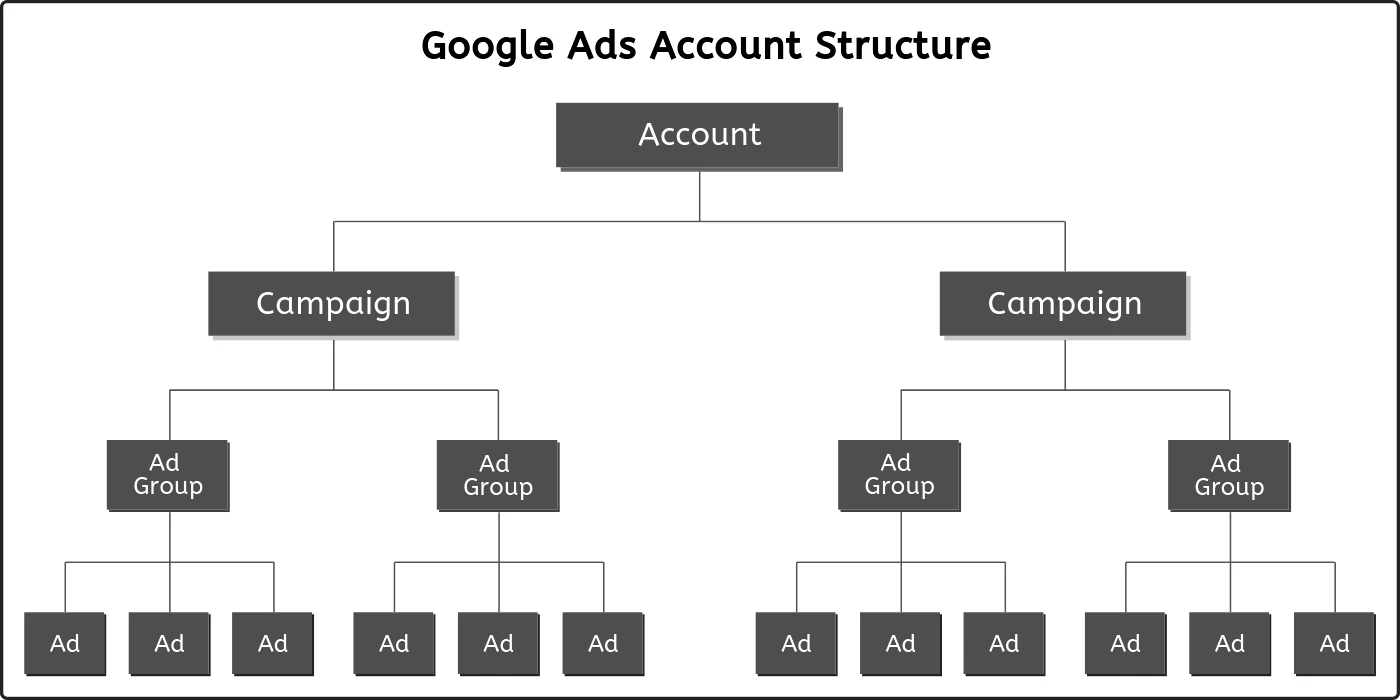Introduction
The rapid evolution of the advertising landscape, particularly in the context of Google Ads, has been remarkable. Over the past few years, we’ve seen a significant shift towards reliance on AI and algorithms, fundamentally changing the strategies and tactics used in setting up and managing campaigns.
Moreover, the increasing scarcity of data due to privacy regulations and changes in user behavior has further complicated the landscape. This has necessitated a rethinking of campaign structures, as traditional methods may no longer yield the desired results.
In this article, we will delve into various Google Ads structure types, considering these recent changes. We’ll provide insights and tips to help you navigate this new terrain and optimize your campaigns. Whether you’re a seasoned marketer or a newcomer to the digital advertising scene, understanding the different ways to structure your Google Ads can significantly impact your campaign’s success.
Let’s dive in and explore how to adapt and thrive in this rapidly changing environment.
The 7 Account Structures
- Single Keyword Ad Groups (SKAGs): SKAGs involve creating a separate ad group for each keyword, allowing for highly targeted ad copy and landing pages. While this can improve Quality Score and click-through rate (CTR), it can be time-consuming to set up and manage.
Comment: SKAGs used to be the go-to advertising strategy. However, since the exact match type has become less exact, managing these campaigns has become more time-consuming.
When to use this: SKAGs are particularly useful when dealing with low volume & high CPCs, targeting long-tail or bottom-of-funnel keywords, or when you want full control over the alignment from keyword to ad to the landing page.
- Single Theme Ad Groups (STAGs): STAGs offer a more flexible approach where each ad group contains closely related keywords. This structure strikes a balance between relevance and manageability.
Comment: STAGs provide a balanced way of advertising, where you give a clear direction to Google while letting the algorithm do its work to find the right audience.
When to use this: STAGs are ideal for new products or services or when time is constrained.
- Hagakure Method: Recommended by Google, the Hagakure Method involves grouping all keywords into a few ad groups within a campaign and using Smart Bidding and Dynamic Search Ads to optimize performance. This method simplifies account management, leverages Google’s machine-learning capabilities, and requires giving up some control.
Comment: As a PPC specialist, it’s important to approach this method cautiously, as Google recommends.
When to use: The Hagakure method is best used when the budget is not an issue and you’re sure to do at least 30 conversions per month (preferably 50 or more).
- Brand vs. Non-Brand: This structure separates branded keywords (those containing the brand name) from non-branded keywords. This can help differentiate performance between the two, as branded keywords often have higher CTRs and conversion rates.
Comment: Always set up a separate brand campaign and exclude it from other campaign types. This is more of a necessary add-on to the strategy you choose.
When to use: Always.
- By Match Type (or The Keyword Funnel): Some advertisers separate ad groups or campaigns by keyword match type (exact, phrase, broad). This can provide more control over bids and budgets for each match type.
Comment: This structure type acts as a keyword funnel, where you have the exact match keywords in their own campaign, added from the phrase match and broad match campaigns. It’s a great way to build up a campaign.
When to use: This structure is ideal when an advertiser knows it is there for the long run and wishes to stay “on top” by letting the top of the keyword funnel be broad and ‘hunt’ for new search queries or when dealing with a dynamic market.
- By Geographic Location: If a business operates in multiple locations, campaigns can be structured to target specific geographic areas. This allows for location-specific ad copy and bid adjustments.
Comment: This is especially helpful for multi-branch or franchise local providers where foot traffic plays a significant role.
When to use: This structure is ideal for specific local coverage, multi-branch or franchise providers, or where foot traffic plays a significant role.
- By Funnel Stage: Campaigns can be structured to target different stages of the sales funnel (awareness, consideration, conversion). Each stage can involve different keywords, ad copy, and bidding strategies.
Comment: Here, you can look at the prospective client’s funnel and the different campaign types Google offers. From YouTube, Display, and Discovery for awareness to Search and Retargeting at the lower ends of the funnel.
When to use: This structure is ideal when the sales cycle is longer, usually when it concerns a higher ticket product or service, when it is about a new product or service, or where educating the prospect is necessary.
Conclusion
Understanding how to structure your Google Ads is crucial in optimizing your campaigns. Whether SKAGs, STAGs, or the Hagakure Method, each structure type has unique benefits and best use cases. By aligning your campaign structure with your business goals and the nature of your target audience, you can drive better results and achieve your digital marketing objectives.
Remember, the key to a successful Google Ads campaign lies in your chosen keywords and how you structure your campaigns. So, take the time to understand these different structure types and apply the one that best suits your needs.
Ready to take your Google Ads campaigns to the next level? Book a free 30-minute discovery call to discuss your specific needs.
